.NET: The Good Parts - from CLR to the community
Want to meet John Galloway (CEO of the .NET Foundation), Pavel Yosifovich (author of the legendary Windows Internals and new courses at Pluralsight )? Or maybe Alex Thyssen - 12-fold MVP in the Visual Studio category? Or get training from Konrad Kokos (author of “Pro .NET Memory Management”)? Now you have this opportunity.
May 15-16, St. Petersburg will host the largest conference for .NET developers - DotNext 2019 Piter . Under the cut there will be a structural review of the program of reports and a couple of words about the training.
One day, Douglas Crockford wrote the book JavaScript: The Good Parts, and this marked the beginning of many works dedicated to highlighting the very best in a variety of technologies. In this habrapost we will talk about the four best sections of knowledge about the .NET ecosystem that are relevant in 2019.
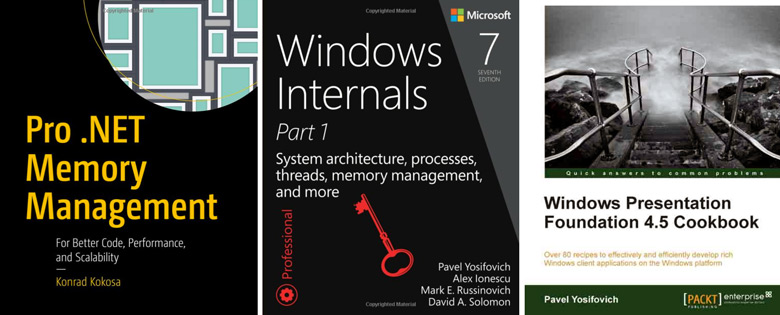
As you know, the work on the selection of reports begins in more than six months. Here is our caterpillar:
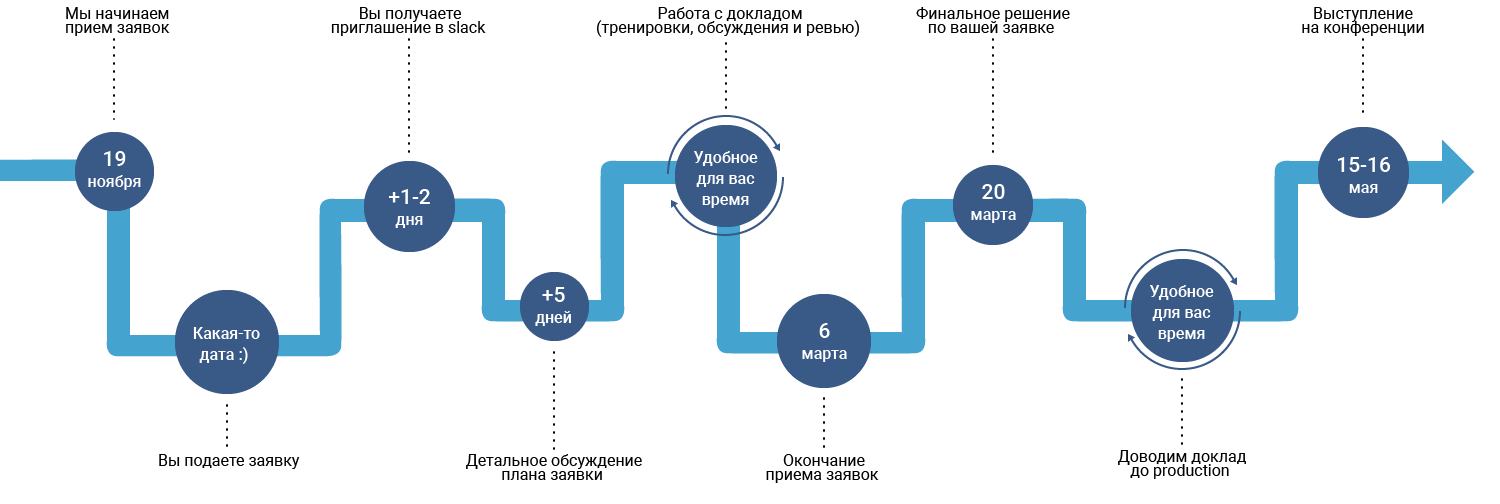
As you move along this path, the cells on the conference program page gradually fill up. Today is April 26, only 19 days are left before the conference, and this is the final straight. Speakers polish reports to shine, the organizers are preparing for the conference, the participants purchase tickets.
 An interesting fact: the members of the Program Committee have time not only to work at the main work and do a conference - they invent their own reports and write books. Andrei Akinshin DreamWalker from JetBrains, a person who does not need to be introduced, in parallel with the preparation of the conference, managed to finish the book “Pro .NET Benchmarking” , with which we warmly congratulate him!
An interesting fact: the members of the Program Committee have time not only to work at the main work and do a conference - they invent their own reports and write books. Andrei Akinshin DreamWalker from JetBrains, a person who does not need to be introduced, in parallel with the preparation of the conference, managed to finish the book “Pro .NET Benchmarking” , with which we warmly congratulate him!
Main themes
The structure of the conference is not static. It changes from year to year, reflecting the most important trends in the world of .NET development. You can learn the most useful things at the moment and talk with the most popular speakers.
In the spring of 2019, the list of main topics is as follows:
- Trends - cool overview reports on the state of the .NET development in general;
- Architecture is all about good architecture;
- Best practices - good practices in various areas of development;
- Internals - the insides of various technologies, from compilers to libraries.
Let's deal with each category separately.
In this habrosta told not about all the reports! Rather, it is a quick review. You yourself can look at the full program DotNext 2019 Piter . I strongly advise you to do this, because no matter how much you say "halvah" - your mouth will not become sweet!

All that is under the hood is the same hardcore, only for the sake of which many in general come to the conference.
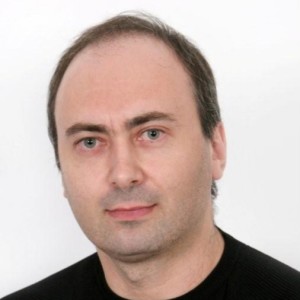 Pavel Josifovich is known as the author of “Windows Internals”, “WPF Cookbook”, “Mastering Windows C ++ App Development” and six courses at Pluralsight. If you are also interested in C ++, he also talks about it . In addition, he is a well-known developer, coach and speaker, but in this role we have hardly seen him - he almost never happens in Russia. Great pride and good luck that Pavel comes to DotNext for the second time. The previous time he really liked. In his new report, “Building your own profiling and diagnosis tools with Event Tracing for Windows,” he will talk about how to place yourself in the service of ETW, and will tell you many practical details.
Pavel Josifovich is known as the author of “Windows Internals”, “WPF Cookbook”, “Mastering Windows C ++ App Development” and six courses at Pluralsight. If you are also interested in C ++, he also talks about it . In addition, he is a well-known developer, coach and speaker, but in this role we have hardly seen him - he almost never happens in Russia. Great pride and good luck that Pavel comes to DotNext for the second time. The previous time he really liked. In his new report, “Building your own profiling and diagnosis tools with Event Tracing for Windows,” he will talk about how to place yourself in the service of ETW, and will tell you many practical details.
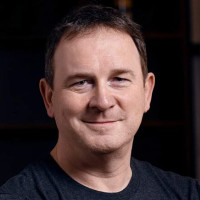 Christophe Nasarre is an amazing person who, apart from 25+ years of working with Microsoft technologies, managed to attend a technical reviewer at MSPress, Addison-Wesley and other publishing houses since 1996, working on books like “CLR via C #” and the latest editions of “Windows Internals” . Together with Kevin Gosse, they will make a powerful report “Debugging asynchronous scenarios in .NET” . There is nothing easier than debugging asynchronous code — when two WinDbg professionals and other tools talk about it.
Christophe Nasarre is an amazing person who, apart from 25+ years of working with Microsoft technologies, managed to attend a technical reviewer at MSPress, Addison-Wesley and other publishing houses since 1996, working on books like “CLR via C #” and the latest editions of “Windows Internals” . Together with Kevin Gosse, they will make a powerful report “Debugging asynchronous scenarios in .NET” . There is nothing easier than debugging asynchronous code — when two WinDbg professionals and other tools talk about it.
 Andrey Karpov works at JetBrains, where he is engaged in supporting C # in ReSharper and Rider products. Before JetBrains, he was engaged in low-level programming, Windows kernel research, and so on. C # continues to evolve. The upcoming new version adds support for asynchronous iterators. What it is? What is it for? How it works? One can learn how to use async streams now by visiting the report “Yield at me, 'cause I'm awaiting” .
Andrey Karpov works at JetBrains, where he is engaged in supporting C # in ReSharper and Rider products. Before JetBrains, he was engaged in low-level programming, Windows kernel research, and so on. C # continues to evolve. The upcoming new version adds support for asynchronous iterators. What it is? What is it for? How it works? One can learn how to use async streams now by visiting the report “Yield at me, 'cause I'm awaiting” .
 Nikita Tsukanov has an amazing experience. He started in Navigator with developing for WinCE / Mobile on C / C ++, doing a VPN service with a cross-platform client on GTK #, Promarket trading platform, Mono Maintainer for Nokia N900, making tools for car chip tuning, mobile messenger with End2End encryption, and a bunch of things. His report “Cross-platform object-oriented interaction of C # and C ++” will present a solution for two-way transparent interaction between C ++ and C # at the interface level, which can implement both C # classes and C ++ classes. In other words, you can forget the horrors of C ++ / CLI and consider an alternative.
Nikita Tsukanov has an amazing experience. He started in Navigator with developing for WinCE / Mobile on C / C ++, doing a VPN service with a cross-platform client on GTK #, Promarket trading platform, Mono Maintainer for Nokia N900, making tools for car chip tuning, mobile messenger with End2End encryption, and a bunch of things. His report “Cross-platform object-oriented interaction of C # and C ++” will present a solution for two-way transparent interaction between C ++ and C # at the interface level, which can implement both C # classes and C ++ classes. In other words, you can forget the horrors of C ++ / CLI and consider an alternative.
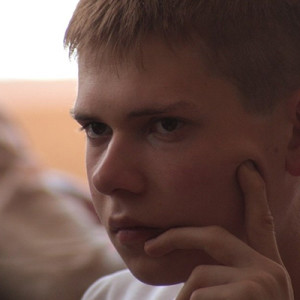 Evgeny Peshkov epeshk is engaged in a common infrastructure in the Kontur company, developing a cloud application hosting platform. He is interested in the internal device of .NET and Windows and uses this knowledge in practice. In the new report “Multithreading in .NET: When Productivity Is Not Enough”, we will look at errors and problems of using multithreading in .NET. Let's look at a few examples where the use of tools from the .NET standard library led to performance drops, and talk about solutions that are tailored for specific tasks and devoid of these shortcomings.
Evgeny Peshkov epeshk is engaged in a common infrastructure in the Kontur company, developing a cloud application hosting platform. He is interested in the internal device of .NET and Windows and uses this knowledge in practice. In the new report “Multithreading in .NET: When Productivity Is Not Enough”, we will look at errors and problems of using multithreading in .NET. Let's look at a few examples where the use of tools from the .NET standard library led to performance drops, and talk about solutions that are tailored for specific tasks and devoid of these shortcomings.

Many are skeptical of reports about the distant future, when spacecraft surf the .NET spaces. Fortunately, everything is much more interesting here, because the reports are made by well-known and respected people in the community who are worth listening to. Often, in the feedback forms, people are asked to come someone specific - and the program committee is trying to realize these desires.
For example, Dino Esposito will hold two reports at once - “ASP.NET Core 3.0: State of the art” and “ASP.NET Blazor programming 101” . First, these are just very popular topics. Secondly, Dino is a person who has written over 20 books, for 1000 articles, made 500+ reports at conferences and so on and so forth - one of the most popular English-speaking .NET speakers. And thirdly, Dino firmly entered the history of DotNext, making a report every year, starting in 2014, including the opening keyout of the first Moscow DotNext. Obviously, it is he who should be talking about ASP.NET Core 3.0.
Dmitry Nesteruk mezastel , whom many people in the St. Petersburg .NET community already know, will tell about the updates in C # 8 . By the way, back in 2014, Dmitry made the very first report of the very first St. Petersburg DotNext - and here he is again with us! And Nico Vermeir will talk about the future of desktop development , and Wesley Cabus on the contrary - about chaos testing . In general, these are the topics that are now actively discussing in the community, and that is why they got into the program.
Separately want to say about John Galloway. John is the CEO of the .NET Foundation, a technical evangelist at Microsoft, co-author of the book “Professional ASP.NET MVC” and well-known tutorials like MVC Music Store , a well-known speaker and podcaster. Many already know about the .NET Foundation, but they don’t understand exactly what it really is and why bother to know about it at all. John will reveal all these questions and tell you how to get involved.

Architecture is about how to organize your systems, what elements to choose and how they should behave and interact. As from small subsystems to collect large. How to choose the right architectural style that will guide the development, how to describe and communicate it, and so on.
Architectural reports are especially hard checked by the program committee. If in such a report there is a discussion of the practices developed in a project, it should be a truly successful technological project. The speaker should not only know the topic, but also clearly explain even the most complex abstract things in the shortest possible time (an hour to report). In general, it should be information that can be trusted, and not something taken from the ceiling. The key difference from the “Trends” category, for example, is that architectural effects will not affect today and tomorrow, and it is to look at the time-tested principles that we attend such reports.
Here it is necessary to mention, for example, the report of Vagif Abilov VagifAbilov . Vagif works in the Norwegian company Miles and his programming experience spans about three decades. He is currently developing systems on F # and C #, often speaking at conferences, taking part in open-source projects and supporting Simple.OData.Client. His report “Life after business objects (confession of a veteran of the PLO)” should interest everyone who enjoys domain modeling and F #. A few years ago, tired of the mutated data structures, thread synchronization and cumbersome business objects, the Vagif team switched to using F #. This report will discuss both the expectations from this transition and the new approach to domain modeling that they have mastered. Separately, we will hear about business objects — more precisely, about their absence — and about how they can be successfully replaced. Since such topics often cause controversy, we decided to start the discussion right during the Vagif report, making it interactive and inviting another popular speaker - Maxim Arshinov marshinov .
If your project is not a dense legacy, then, most likely, it is based on some fashionable architectural concept. CQRS, for example. Or DDD. Or maybe Actor Model? However, it makes no difference - all of them are somehow connected with the world of functional programming. Roman Nevolin nevoroman will tell us all about this in a report with the saying title "Why your architecture is functional and how to live with it . "
So that you do not think that this is some kind of meeting of functionaries and F # -ists, you need to mention the reports that develop the discussion of the classical dilemma of microservices and monoliths. Sean Farmar from Particular Software (developers of NServiceBus) in the report “Successfully decomposing your monolith” will show not only how to cut the monolith, but also how to use the principles of DDD and SOA when modeling a simple vertical cut. The DDD topic will be continued by Konstantin Gustov in the report “DDD in microservices: complexity versus complexity” .

Best practices are a way to formulate successful practical experience. If there is an optimal way to achieve the goal, then perhaps it can be applied in other places. The term "best practice" was coined in 1914 by Frederick Winslow Taylor - an American engineer, the founder of the scientific organization of labor and management. "Among the variety of methods and tools used at each moment of each process, there is always one method and tool that works faster and better than the others . " More than a hundred years have passed since then, mankind has made another great discovery - programming conferences, the best way to discover the best practices!
Among the reports of this type are traditionally many simple introductory reports and reports of applied sense. The most important thing in them is to clearly bring a purely practical idea so that you can come to work in a couple of days and begin to apply it. In the wild of architectural astronautics, they usually do not go deep, for this there is another set of topics.
Who would you like to see as a speaker in this category? Let's start with Alex Thissen. He has been programming since the late 90s, has worked as a leading developer in various companies (from small startups to huge enterprises) and now teaches applied developers to use Microsoft technologies, architects to design and build modern distributed applications, and in his spare time he develops games. His report “I don't feel so well ... Integrating health checks in your .NET Core solutions”, as it should be, falls into the category of “smoothies” and talks about a very specific thing: health endpoints in ASP.NET Core 2.2. How to embed them, what they are all about, what happens to external dependencies like databases and HTTP endpoints. And finally, how to use all this on a cluster of containerized software.
But Dmitry Ivanov from JetBrains report is already heavyweight. "Async programming in .NET: Best practices" is a story about painful. With the appearance of async / await, deadlocks and flights did not disappear anywhere - they dug deeper and it became harder to diagnose them. About the correct and incorrect patterns of writing asynchronous code will tell you not someone, but the technical JetBrains Rider and the developer of the kernel ReSharper (data structures, caches, multithreading).
If you briefly mention the rest of the speakers, then the architect of the company Info Support Edwin van Wijk with “How to get a grip on your microservices system using a service mesh” gets exactly here - a story about how to implement a mesh for your microservices and build basic things like routing , circuit breakers and so on. About how to simplify life, hiding behind API Gateway, but not writing bicycles, Roberto Freato will tell us in the report “API gateway made easy with Ocelot and containers” , and Matthias Koch , the developer of the modern NUKE assembly system, will talk about it .

On May 17, right after the main conference program, Konrad Kokosa training will take place . It will last from 10 to 18 o'clock in the afternoon.
This is a training that almost every .NET developer can benefit from. It starts with the basic concepts of .NET runtime and then goes through a bunch of aspects of memory management. Both an experienced developer and a beginner can get a lot from the training. Even a very advanced developer has something to learn there!
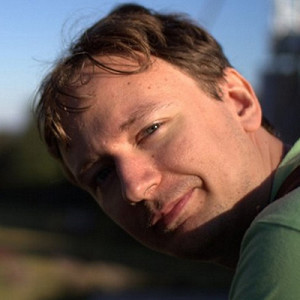 Konrad is the author of Pro .NET Memory Management. For over a dozen years, he continues to work on performance and architectural problems in the .NET world, including the acceleration of web applications. Performance and diagnostics of .NET applications is the specialization of its trainings. Konrad received the MVP in the Visual Studio and Development Tools category and is the co-founder of https://dotnetos.org .
Konrad is the author of Pro .NET Memory Management. For over a dozen years, he continues to work on performance and architectural problems in the .NET world, including the acceleration of web applications. Performance and diagnostics of .NET applications is the specialization of its trainings. Konrad received the MVP in the Visual Studio and Development Tools category and is the co-founder of https://dotnetos.org .
The goal is that as a result of the training, participants will get a much deeper understanding of automatic memory management in .NET runtime (both in the Framework and in the Core). This allows you to write code that takes into account the work with memory, and diagnose various related problems. Moreover, here we will get acquainted not only with the direct application of things, but also with how and why they were implemented in this way, and not with some other. For example, let's touch the details of the implementation of the garbage collector. This will make it easy to solve a wide range of other issues that are beyond the scope of training topics.
Next steps
I remind you that the 2019 Piter DotNext conference will be held May 15-16 in St. Petersburg. You can view the program on the official website .
You can also buy tickets there .
Notice that the tickets are of different types - for example, there are discounts for students, graduate students and teachers. There are special online tickets for those who for some reason will not be able to come in live (obviously, such participants in a paid online broadcast will also receive all the videotapes from the conference).
It is important that from May 1st there will be an increase in ticket prices. Beginning with Early Bird in December 2018, they grew little by little. Less than a month is left before the conference starts, and on May 1 the prices will be final If you are determined to go, it does not make sense to pull, you need to take now.
Successful coming May holidays, and meet on DotNext 2019 Piter!
')
Source: https://habr.com/ru/post/449510/
All Articles